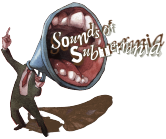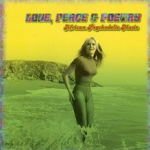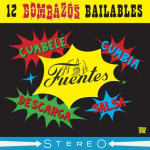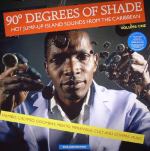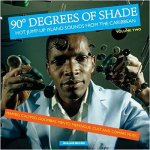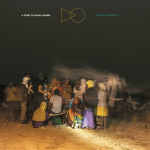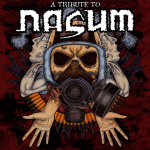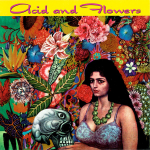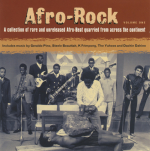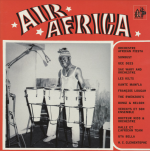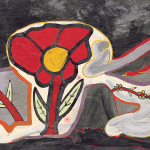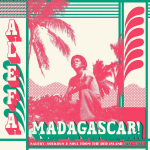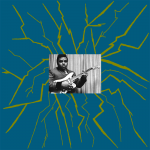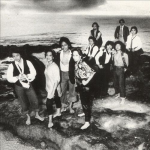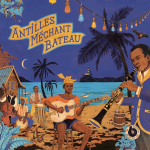01. MCCULLY WORKSHOP INC.- The Circus
02. WAYGOOD,OTIS - A Madman's Cry
03. BLO - Time To Face The Sun
04. ABSTRACT TRUTH - Moving Away
05. FREEDOMS CHILDREN - 1999
06. SUCK - Elegy
07. THIRD EYE,THE - Valley Of Sadness
08. FREEDOMS CHILDREN - Gentle Beasts Part 1
09. PORTER,MACK SIGIS - The Seventh House
10. WAYGOOD,OTIS - The Higher I Go
11. ILILONGA,RIKKI - Love Is The Only Way
12. ZEBBY,CHRISSY - Oh Ye Ye
13. KLOPJAEGER,QUENTIN E. - Weatherman
14. ABSTRACT TRUTH - Original Man
15. FREEDOMS CHILDREN - Kafkasque
16. THIRD EYE,THE - Young Folk And Old Folk
17. OFEGE- GBE Mi Lo
V/A
Love, Peace & Poetry Vol.08 African
Africa 1969 to 1975
Taken as a whole, the previous volumes of Love, Peace & Poetry can be seen as a sort of ever-expanding jigsaw puzzle. The picture that emerges brings into clearer focus the impact of the musical revolution of the 1960s across the far-off reaches of the globe. Like… Africa. The word itself is impossibly deep with cultural complexity and nuance. The world that produced Elvis Presley and The Beatles, Chuck Berry and The Rolling Stones, is immeasurably removed from a world in which elephants, lions and leopards wander free across the landscape. The world of myth and imagination in which Tarzan: Lord of the Jungle reigns supreme; versus a real world in which Tarzan’s life expectancy might peak at fifteen minutes, maybe half an hour on a really good day. Africa is an enormous continent of impossibly complex and shifting political landscapes within a greater historical context of colonialism and domination. To gain our footing here demands one immediate division: we will split the continent in two and look first at the evolution of a psychedelic music scene in Southern Africa (South Africa and Rhodesia, as Zimbabwe was known prior to 1980). This division is not an arbitrary one. The music here from Southern Africa was created within a predominantly British culture that had been imposed upon an enduring African one. These musicians’ appreciation of African culture would have been almost always indirect and partial. In many senses these individuals were effectively cordoned off from the cultures of the indigenous peoples. Musical influences and styles were self-consciously adopted from the new psychedelic and progressive music coming in from Britain and the U.S. This is not to say that unique music was not made in these Southern African countries and that something uniquely African did not filter in at some level. This is a matter for the individual listener to decide as he makes his way through this volume. While there was a colonial presence in the African countries north of the Zambezi River as well, the indigenous African culture was not dominated by an imported one; and the music that developed there was made by indigenous people, not people whose families had been in Africa for a few generations at most. These psychedelic influences there would have been a lot more random, and no doubt what did filter through would have found many resonances in the indigenous musics that took their pulses and drones directly from their natural surroundings, unmediated by outside musical or cultural conventions. Psychedelic Music in South Africa, or: a Praying Mantis in the foyer and the Bee Gees are all there…. The institutionalized racism of apartheid began in 1948 under the specter of Afrikaner Christian Nationalism. The goal of the National Party was to stop dead or turn around a range of developments that were the norm in colonial societies elsewhere. Instead, as South African writer J.M. Coetzee observed, they “instituted a sluggish no-time, in which an already anachronistic order of patriarchal clans and tribal despotisms could be frozen in place.” Calvinistic Afrikaner nationalism sought to swamp, overshadow and displace the English-speaking culture, but this was itself a culture “…looking, when it looked anywhere, nostalgically back to little England, (that) did little to quicken time.” By the arrival of the “swinging Sixties” South African youth found themselves cut off and isolated from the rest of the modern world. The “better” English-speaking schools were little but unintentional parodies of British public schools whose traditions they desperately strove to emulate. At a time when these same British public schools were being corrupted by the illicit delights of the new psychedelic era, in South Africa and Rhodesia “good” boys’ schools continued to espouse the values of the years before and between the two world wars, with rugby and cricket considered to be the foundation stones of character-building. Prompted by the “more popular than Jesus” controversy, the South African Broadcasting Corporation banned the Beatles from state radio. Censorship of books, films and records was also commonplace. However, in an age of borderless electronic media, such controls and constraints are never wholly successful. One non-South African radio station, LM Radio, became important as an illicit importer of forbidden sounds. Based in Lourenco Marques (today Maputo) in neighboring Mozambique, LM blasted forth the latest pop sounds around the clock (including the banned Beatles), and was likely made solvent by the enthusiasm of South African teenagers. The South African “Summer of Love” burst forth belatedly in late 1969, spearheaded by the arrival of The Otis Waygood Blues Band from Rhodesia (the name derived from reversing the order of the two words in the name of a well-known elevator manufacturer to create something that sounded as if it could be the name of a black American bluesman) who stomped, shook and shuddered with all the primal frenzy of black-inflected rock ‘n’ roll. To conservative white Rhodesians seeing them belt out “You’re Late, Miss Kate” on national TV they must have seemed the devil incarnate (and a black devil at that). During their college Christmas summer holidays of 1969 they trekked down to South Africa to try their luck in the burgeoning scene of pop festivals and small underground clubs. In the months following the recording of their debut album, both their lifestyle and their music took a darkly psychedelic turn. In the face of ever-increasing police harassment and dwindling career prospects owing to the small size of the South African head audience, they returned to Rhodesia. They were loathed by Ian Smith as the embodiment of all that constituted an affront to any right-thinking Rhodesian, and he made it his business to see that military call-up papers awaited each of them on their return. Quietly, they slipped away and fled to Europe. Most of the surviving members still live abroad today. Otis Waygood is represented here by two tracks (2 & 10) from their 1971 LP, Ten Light Claps and a Scream. Much in the same way we’ve seen it progress throughout the rest of the world, clubs began to spring up everywhere in the major cities (Johannesburg, particularly the Hillbrow district, Cape Town and Durban). Durban, probably best known to heads the world over for the potent “Durban Poison” (actually grown and harvested in the Transkei area), had a particularly vibrant live scene. From the popular folk trio Mel, Mel and Julian came Julian Laxton, who joined Freedom’s Children when Kenny Henson, guitarist on the first LP, left to form the Abstract Truth. Although Freedom’s Children saw themselves as emulating the explorations of the leading progressive groups abroad (e.g. Pink Floyd and King Crimson), one has only to listen to Astra (track 8), Galactic Vibes (track 5), or Battle Hymn of the Broken-Hearted Hordes (track 15) to appreciate why they are held to be the premier South African psychedelic band of the era. The Third Eye released albums of original songs while supplementing their incomes by playing cover versions of hit parade songs at the South African equivalent of the high school Senior Prom (called “matric farewell dances”). They are represented here by tracks from both their Awakening…(1969) and Brother (1970) LPs. If you can imagine an amalgam of Black Sabbath and Grand Funk Railroad with the overall aesthetic aspirations of Cleveland’s art terrorists the Electric Eels and fronted by a mean and lean little punk from Detroit you have the basic idea of Suck. Represented here by “Elegy” (taken from their 1971 LP Time To Suck), Suck imploded in less than a year. Their outrageous antics enraged civic authorities everywhere and soon they were banned from nearly every available venue in the country. When Time To Suck was released in South Africa it stiffed everywhere and every .99 cent bargain bin was crammed with copies at the time. When the first enterprising psychedelic record dealer invents a practical time travel device those bins might make a good target for the maiden voyage. Quentin E. Klopjaeger was the Sergeant Pepper-inspired alter-ego of Billy Forrest, producer of the McCully Workshop LP and a popular MOR Country and Western singer in his own right. What may be less well-known is that “Billy Forrest” was yet another pseudonym; his real name was William Boardman. Quentin’s big hit was “Lazy Life,” in which he dreamily extolled the pleasures of such. This would, of course, not have sat well with the work ethic-conscious sensibilities of the audience that he attracted in his C&W guise, making Bill’s need for a further alias less than surprising. Quentin E. Klopjaeger is represented here by “Weatherman” taken from the 1969 LP, Fantasy. The South African tracks on this collection come full circle, back to the opener, the sublime Billy Forrest-produced “Circus” by McCully Workshop. It’s a gorgeous slice of churning psychedelic pop that would have sounded great had it been made anywhere. Closer to Their Satanic Majesties Request than Sergeant Pepper, the vocal delivery and atmosphere are uncannily close to East of Eden’s “Northern Hemisphere.” Theirs was a world where the sinister figure of a (presumably much larger than life) praying mantis could easily rub shoulders with the Bee Gees, which is probably as good a metaphor for psychedelic music in South Africa as any. Psychedelia Beyond Southern Africa Moving beyond the borders of South Africa and Zimbabwe is a move into mostly as-of-yet uncharted territories for psychedelic record collectors. But record collectors are drawn from hardy stock and ready to cross the plains and enter the jungles in search of the lost fuzz guitar chord and four figure price tags. Here are some of the early results of their adventures. Blo Chapter One. One of the most sought after LPs from Africa (or anywhere, for that matter), this will be reissued later this year in its original gatefold cover. Producer Toni Amadi tried hard to get a US record deal with the Manticore label but it never happened. Two of the three band members toured the US and Europe in 1972 with Ginger Baker. In Nigeria, Blo worked as a support act for Osibisa and B.B. King. The band’s name is an anagram for the three band member’s names: Berkely Ike Jones, Laolu Akintobi and Mike Odumosu.
Peace On You is an African/Italian collaboration recorded in 1972 by Mack Sigis Porter. The original LP exists only as a demo pressing on the Italian RIFI label housed in an elaborate triple gatefold sleeve making it among the rarest LPs from either country. Which African nation Porter is from remains unknown at this time. “The Seventh House” has definite late 60s-early 70s British influences in its construction. An Austrian record collector living in California recently discovered Rikki Ililonga’s Sunshine Love LP, a hitherto unknown album from Zambia recorded in Kenya. The entire album lives up to the promise heard here on “Love is the Only Way” and a reissue will be in the works in due time. Another album scheduled for a much welcomed reissue is My Ancestors by Chrissy Zebby Tempo & Ngozi Family. A very rare LP from Zambia, this is the first (and best) of many LPs by Zebby, originally released in 1974. As you hear here on “Oh Ye Ye” (track 12), Zambian records from this period are often characterized by their prodigious use of fuzz guitar. Besides Blo, Ofege is the other known band in the Nigerian underground music scene. Their first LP, Try An Love, was released in 1973 and will be reissued in the Fall of 2004. “Gbe Mi Lo” gives a good impression of its fuzz-driven sound and closes this collection. Enjoy.
